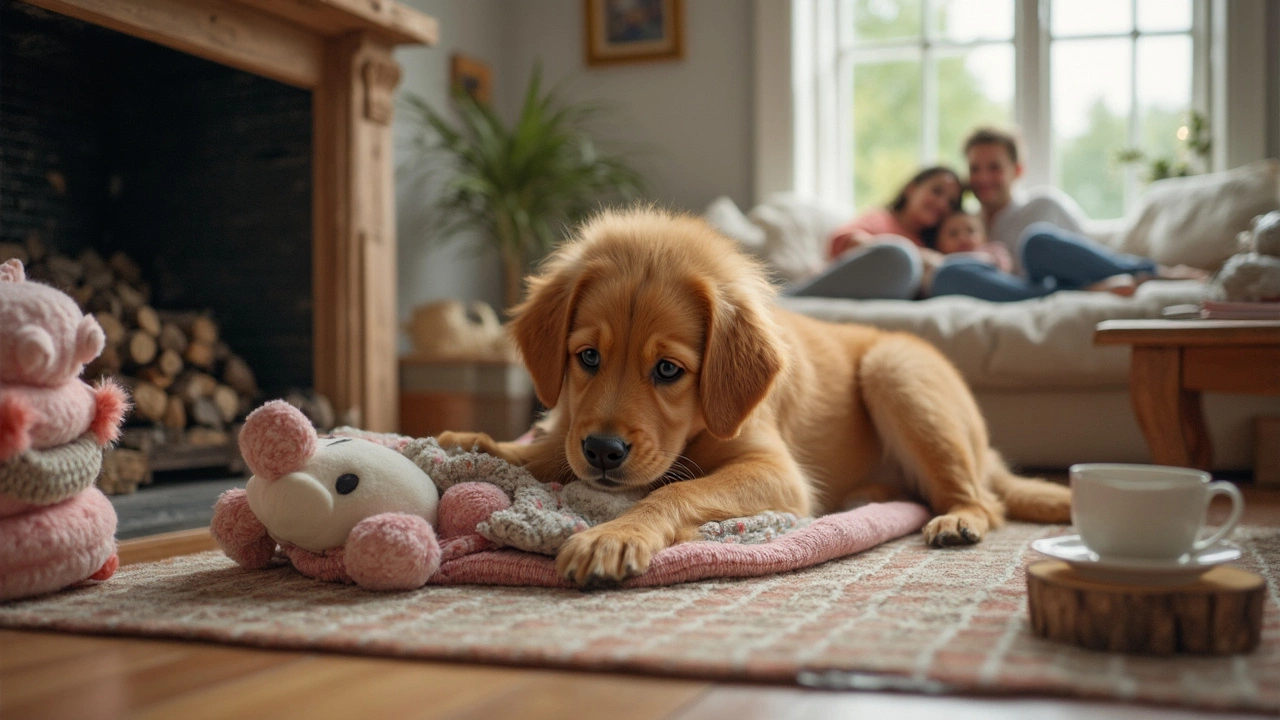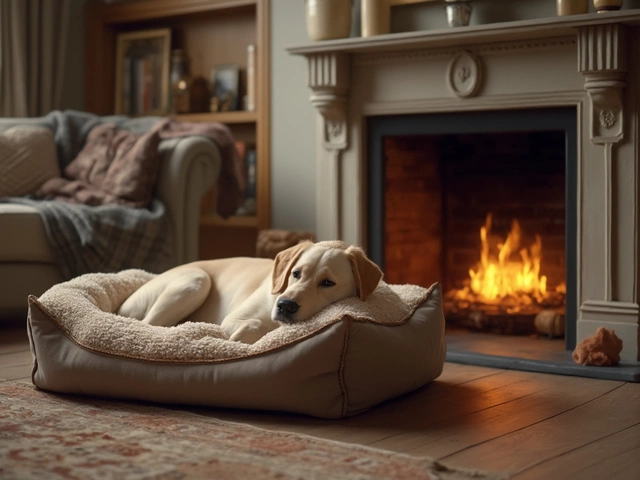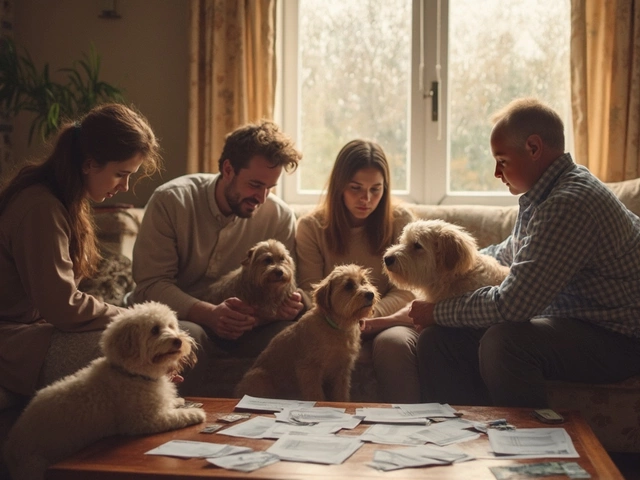Ever caught your dog gently nibbling, sucking, or kneading a plush toy or old blanket? That’s called nooking. It’s not just random chewing—dogs nooking usually have this slow, focused way of mouthing their soft toy. It almost looks like they’re daydreaming while doing it.
Most folks notice nooking when their puppy is winding down after a big play session or during nap time. If you’ve ever seen a puppy work their little paws into a stuffed animal and softly chew or suck, you’ve seen nooking in action. This habit isn’t rare—in fact, it pops up often in certain breeds. Goldens and Labs, for example, seem almost hardwired for it.
Nooking isn’t always a problem. For a lot of dogs, it’s just a chill way to relax or feel safe. But sometimes it can get out of hand, especially if your dog starts shredding every pillow in the house. The big thing to remember: giving your dog the right kind of toy makes nooking safer (and saves your stuff from getting destroyed).
- Spotting Nooking: What Does It Look Like?
- Why Do Dogs Nook?
- Good and Bad Sides of Nooking
- Best Toys for Nooking Dogs
- How to Support a Nooking Pup
Spotting Nooking: What Does It Look Like?
Nooking is pretty easy to spot once you know what to look for. A dog nooking on a toy won’t look wild or destructive—it's way more mellow. Instead of tearing the toy apart, your dog will settle down with it and gently suck, chew, or knead. The action is slow and rhythmic, kind of like a kid sucking their thumb. Sometimes, they push their front paws up and down against the toy, almost like they’re kneading dough.
Puppies usually start nooking with their littermates or mom. Even as adults, some dogs hang onto this habit, especially when they’re feeling cozy, sleepy, or looking for comfort. You might catch your pup lying on their bed, softly nibbling a favorite plushie, lost in their own world. This isn’t the same as bored chewing—there’s a clear difference in how focused and relaxed the dog seems.
- The toy stays in good shape—no stuffing all over the living room.
- Your dog may close their eyes or look dozy while nooking.
- It usually happens during quiet moments, like after play or before sleeping.
- Some dogs nook on the same toy for weeks or months. That toy can become their security blanket.
A quick tip: If you notice your dog nooking and not actually destroying toys, you’re looking at classic nooking behavior—not just average chewing. For breeds like Labradors and Goldens, this is extra common. It’s kind of their thing.
Keeping an eye out for this can help you pick out better nooking toys and know if your dog is comforted or just bored. The big takeaway: calm, focused mouthing and kneading on soft toys during downtime is nooking, not troublemaking.
Why Do Dogs Nook?
Nooking isn’t just a weird quirk—it has roots in how puppies start out life. Most pups pick it up when they’re only a few weeks old. At this stage, they suckle their mom for food and comfort. The feeling of nuzzling, kneading, and sucking lingers with some dogs even after they’re weaned. That’s why you see older dogs nooking on soft toys or blankets.
This habit sticks around for a few reasons:
- Comfort and Security: Dogs often nook when they’re tired, stressed, or want to feel safe. In shelters, you’ll see pups nooking on bedding a lot more, especially during loud, stressful times.
- Boredom Buster: Some dogs nook simply because it gives them something to do, especially if they don’t have enough toys or playtime.
- Breed Instinct: Breeds like retrievers, who are wired to carry things in their mouths, tend to nook more. It’s like their brain says, “Find something soft and hold on!”
- Separation from Mom Too Early: Pups weaned before 8 weeks old are much more likely to exhibit strong nooking habits. It fills in that missing nursing comfort.
Nooking is often more common than folks think. Here’s a quick look at how often the habit pops up in different situations:
| Situation | Likelihood of Nooking Behavior |
|---|---|
| Left home alone often | High |
| Enough soft toys provided | Medium |
| Adopted after 8 weeks old | Lower |
| Retrievers, herders, or spaniels | Very High |
Keeping an eye on nooking helps you spot when it’s about comfort—and when it might signal boredom or stress. It’s worth paying attention if your dog suddenly starts nooking a lot more, or turns to it during big changes at home, like a move or new family member.
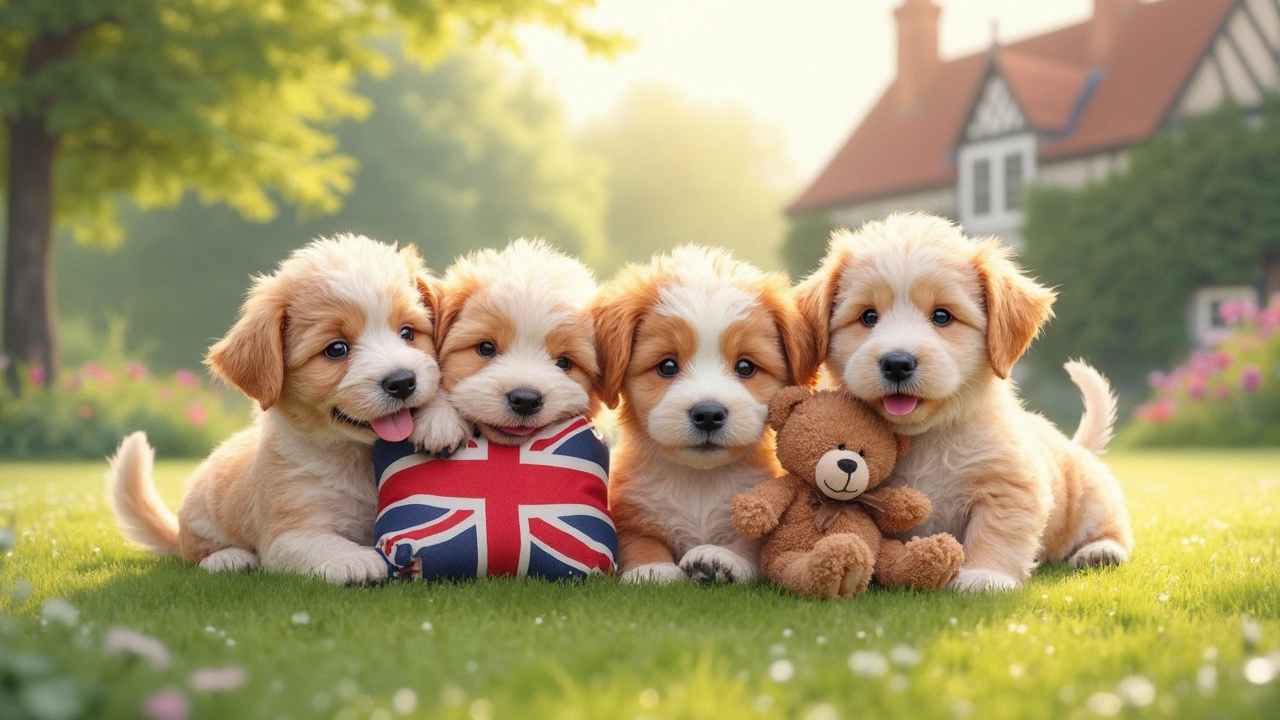
Good and Bad Sides of Nooking
Nooking can be both cute and a little confusing, depending on your dog's habits. There's definitely an upside to this quirky behavior, but there are a few things to watch for too. Let's break it down so you know what’s what.
Here’s the good stuff: nooking often helps dogs relax. A lot of pet parents say nooking calms their pups when things feel stressful—think fireworks, thunderstorms, or when someone’s home late. Some vets even compare nooking to a comfort habit, kind of like thumb-sucking for kids. If your dog picks their favorite toy to nook on instead of chewing your sneakers, that’s actually a win.
- Nooking can help puppies feel secure in new places.
- It keeps their mouth busy, which is great for dogs who struggle with boredom.
- It can reduce anxious behaviors, like barking or destroying things.
But there’s a downside if things get out of balance. If your dog nooks constantly and ignores play or social time, it might be a sign they’re anxious or stressed out. Puppies shouldn’t eat pieces of toys, either. Swallowing stuffing or fabric isn’t just gross—it can seriously mess with their digestion.
| Positive | Negative |
|---|---|
| Calms anxious dogs | May signal real anxiety if obsessive |
| Redirects chewing off household stuff | Risk of swallowing toy bits |
| Can help puppies adjust and settle down | Heavy nooking might mean underlying issues |
The trick is finding a balance. Give your dog safe, sturdy toys and keep an eye on their nooking habits. If nooking suddenly ramps up or your dog seems withdrawn, it’s worth having a chat with your vet or a good trainer. Otherwise, most dogs can nook safely and happily when you set them up with the right stuff.
Best Toys for Nooking Dogs
If your dog is obsessed with nooking, picking the right toy is key. Regular chew toys don’t always cut it—for strong nooking, you want something soft but tough, just like those favorite old blankets puppies never want to give up.
The best toys for nooking share a few must-have features. They’re plush, so dogs can easily grab, knead, and suck on them. The stitching holds up to hours of slobber and gnawing. Bonus points if they’re machine washable—because let’s be honest, that thing’s going to get gross over time.
- KONG Cozie Plush Toys: These super-popular toys are soft on the outside but have reinforced stitching. KONG claims their plush toys last 50% longer than most basic plush toys based on product testing.
- Outward Hound Invincibles: These are plush but include inner layers that are way harder to tear up. They also squeak even after being punctured—a hit if your dog likes some noise time.
- Snuggle Puppy Behavioral Aid: This one gets rave reviews from puppy owners for its heartbeat device inside, which helps calm pups who nook to self-soothe.
- GoDog Chew Guard Tough Plush: These toys use Chew Guard Technology to tackle rough nooking sessions and serious chewers.
Some dogs get obsessed with a favorite plush, so it’s smart to have two identical toys in rotation. That way, one can go in the wash while the other keeps your pup happy. While rubber chew toys like a classic KONG are top picks for hardcore chewers, nooking dogs usually ignore those—they want something squishy, like fabric or fleece.
| Toy Name | Material | Washable | Durability Rating |
|---|---|---|---|
| KONG Cozie | Plush/Fabric | Yes | 8/10 |
| Outward Hound Invincibles | Plush/Layered | Yes | 9/10 |
| Snuggle Puppy | Plush, Heartbeat Device | Washable cover | 7/10 |
| GoDog Chew Guard | Plush Reinforced | Yes | 9/10 |
Skip toys with stuffing that comes out easily. Once your dog tears into the filling, you’re stuck with a mess and possibly a choking hazard. Rope toys and hard nylon are fine for chewers but won’t satisfy a dog looking for that soft, nooking comfort.
If you’ve got a breed known for nooking, like a Lab, Golden, or Collie, invest in high-quality plush toys—it’ll save your shoes and pillows in the long run. Rotate the toys out every week or so to keep things interesting and cut down on germs. If your dog goes through toys quickly, look for products labeled “reinforced” or “tough plush”—these usually hold up longer according to owner reports.
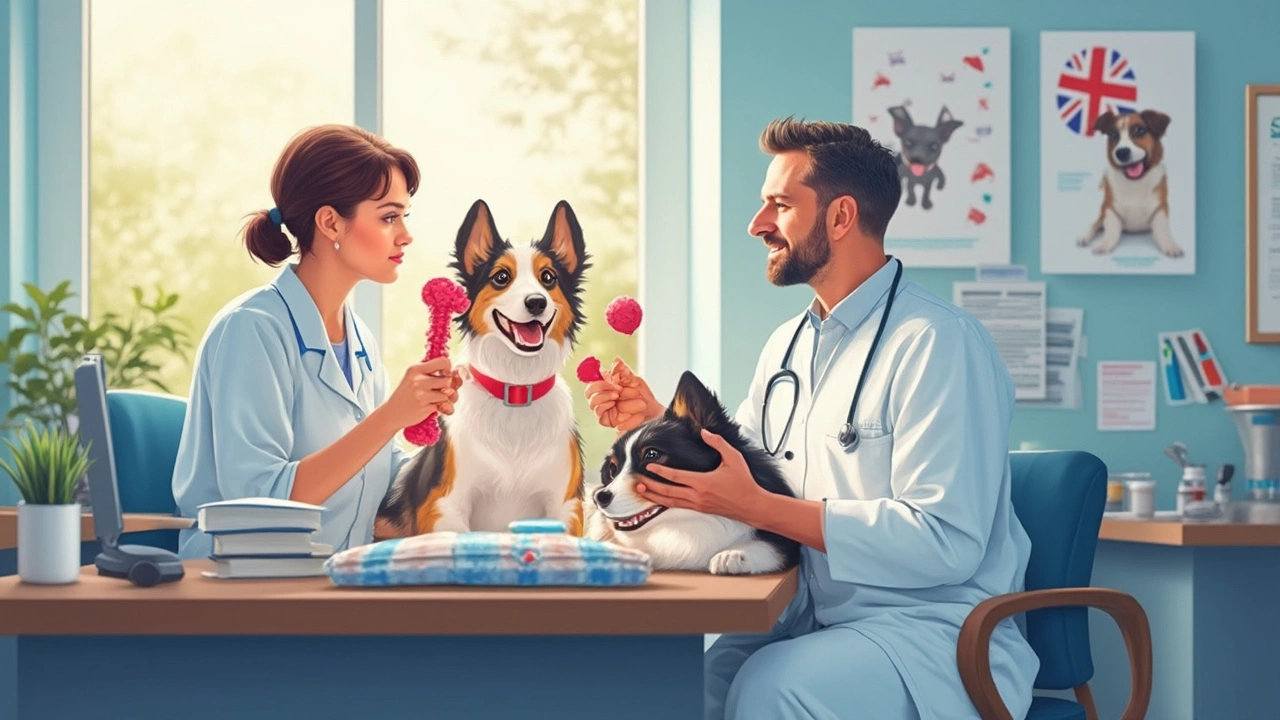
How to Support a Nooking Pup
Helping your pup with their nooking habit is really about making the behavior work for both of you. It’s not something you need to “fix” unless it’s causing problems. Most dogs use nooking to self-soothe, much like kids with a favorite blanket. According to Dr. Mary Burch, certified animal behaviorist for the AKC,
“Nooking is generally harmless if your dog is using safe toys and isn’t chewing obsessively due to anxiety.”
So, how do you set things up for a safe, happy nooking pup? Start with the right gear. Choose toys made for tough chewers that can stand up to lots of mouthing and sucking. Skip toys with loose parts or stuffing that can be swallowed.
- Pick sturdy plush toys labeled for chewing dogs—brands like Kong, Outward Hound, and Tuffy make tough ones.
- Wash toys weekly to keep things fresh and safe. Soft toys get gross fast when soaked in slobber.
- Watch your dog play and swap out toys when they show wear-and-tear.
- If your dog starts eating fabric, switch to rubber or rope toys instead.
Nooking can sometimes signal boredom or mild anxiety. Make sure your dog gets enough playtime and exercise. About 30-60 minutes of activity a day fits most breeds. If nooking ramps up when you leave the house or there’s a storm, it might be your dog’s way of coping with stress. In that case, try giving the nooking toy before leaving or during noisy events.
Check out how common it is for dogs to need a "comfort object" to relax:
| Dog Breed | Shows Nooking or Comfort Toy Use |
|---|---|
| Labrador Retriever | 35% |
| Golden Retriever | 44% |
| Pug | 18% |
| Yorkshire Terrier | 11% |
| Mixed Breed | 28% |
If you’re not sure if your dog’s nooking is normal, take a quick video and show it to your vet or a certified trainer. Most of the time, they'll say it's just their cute way to chill out! But if your dog seems super anxious or is chewing everything in sight, it’s worth checking for bigger behavioral or medical causes.

